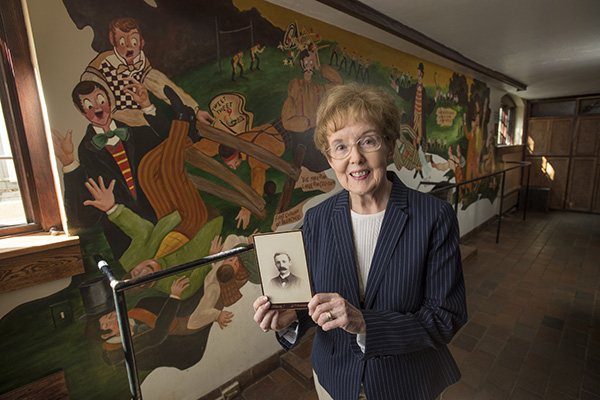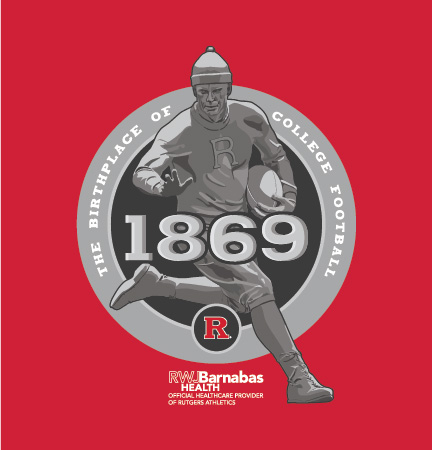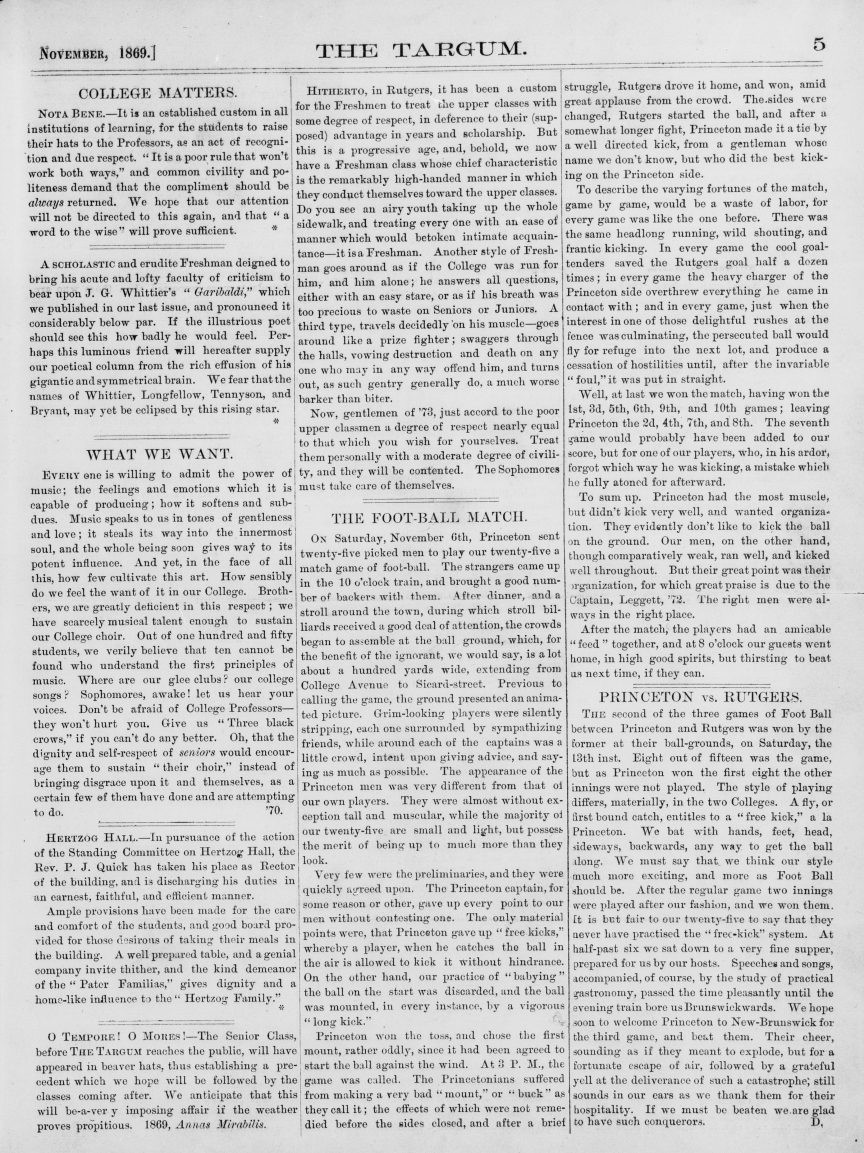A Larger Than Life Story From the Birthplace of College Football

This is the story of a small man named Large who played an oversized role in the history of college football, in spite of his remarkably short career.
George H. Large was a Rutgers freshman when he was approached in the autumn of 1869 by fellow student William Leggett, who was putting together a football team to play a couple of games against nearby Princeton. Large was only 5’ 8” tall – his great-granddaughter, Catherine Wetstein, describes him as “small and scrappy” – but Leggett thought he’d be a good runner.
Wetstein (nee Large) now lives in Flemington with her husband, Art, a Rutgers alum and a fervent fan of the Scarlet Knights, and she’s an invaluable source of insider information concerning what would turn out to be the first-ever game of college football, played 150 years ago, with her great-grandfather in an unlikely starring role.
The game took place at Rutgers on November 6, 1869, using rugby rules. Players scored single points by throwing a round black-rubber ball over a rope tied between two goal posts. No helmets were worn – a crucial point in this story – but Rutgers players did tie red bandanas around their heads.
Other details of the game survive in the archives of the Daily Targum, but today it’s largely remembered for its historical significance, its score (6-4, Rutgers), and a dramatic encounter between Large and a Princeton player known as “Big Mike” Michael, who reportedly came by his nickname honestly.
Toward the end of the game, both Large and Michael were chasing an errant ball when Michael barreled into Large. The force of the collision not only knocked over a fence that was serving as makeshift bleachers, but it also knocked Large out cold in what was almost certainly college football’s first concussion.

It should be noted that, according to Wetstein, Large remembered only “getting the breath knocked out of him,” though virtually all quoted witnesses to the event insist that he lost consciousness – and the fact that he was revived by a bucket of cold, dirty water from a nearby horse trough underscores those observations. (When asked her own opinion, Wetstein replied, “I think he was absolutely unconscious.”)
In any event, living up to his scrappy reputation, Large got to his feet and rejoined the game. He may or may not have played in the rematch, but it’s doubtful that he continued on in college athletics. (Asked if he played other sports, Wetstein noted that “he fished.”) Nevertheless, the story of his role in that groundbreaking first game would follow him all his life, and beyond.
In spite of his robust law career and the fact that he later became president of the New Jersey Senate and served a stint as acting governor, his 1939 New York Times obituary was headlined “George H. Large, 88, Football Pioneer.” Large likely wouldn’t have minded the description. “He thought it was kind of fun,” says Wetstein.
In fact, his football reputation helped get him elected to the State Senate in 1885. (Wetstein’s father jokingly attributed Large’s decision to go into New Jersey politics to “mental derangement” resulting from the concussion, though in fact, the lifelong Hunterdon County resident was actually motivated to run in order to counter what he saw as prejudice in the legislative body against the state’s rural counties.)

Of course, when he signed on for that fateful first game against Princeton, he had no idea he’d be lauded as a pioneer, or that the game would be anything but a bit of fun against a college rival. (Both schools had competed to become the state’s land grant university under the Morrill Act of 1862, and Princeton was still smarting from losing the designation to Rutgers.) Later, though, he must have realized how historic the event actually was. In 1938, he was invited as a guest of honor to witness the inaugural game (against Princeton, of course) in Rutgers’ new stadium, the last living player out of the 50 men who’d assembled on the Rutgers field in 1869.
He would die the following year and never get to see the mural, painted across a wall in a Princeton dining club and unveiled in 1942, memorializing his role in that game. On a recent October afternoon, Catherine Wetstein traveled to the Princeton Tower Club to pose in front of the mural and pay homage to her great-grandfather.
Painted by Vincent Pacelli, an artist associated with the Works Progress Administration in the 1930s, it comically depicts the moment just after impact, with Big Mike holding his head and Large lying prone on the ground, a thought balloon over him bearing a painted bird and the words “Tweet, tweet.” Around his head is a scarlet bandana, the original of which the Large family had preserved for years until it was used to stanch a leak from an attic pipe and subsequently disappeared. From all accounts, Large would have enjoyed the mural.
“He was a nice, nice man, apparently,” Wetstein said, “and Rutgers was always important to him.” It pained him that both of his sons attended Princeton. Joining him at that 1938 inaugural game, they insisted that Princeton would emerge victorious, as it had in every game between the two universities since 1869. Large was unconvinced. “We’re going to tan your hides,” he told them. And he was right.